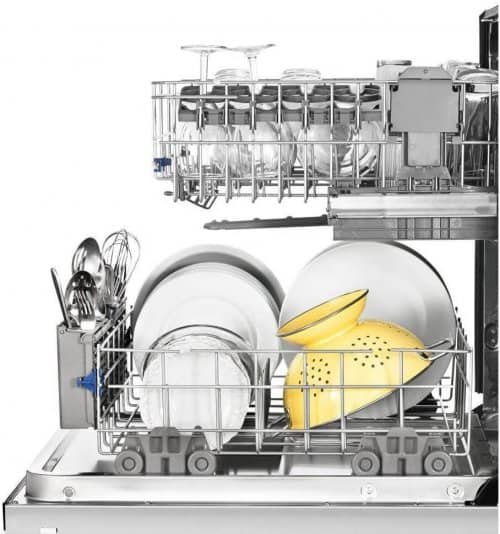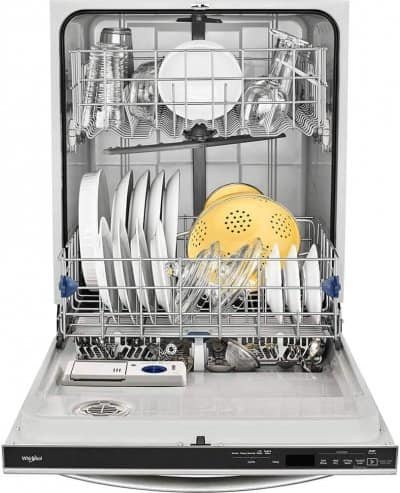Dishwashers have become an essential appliance in our daily lives. They save time and energy by washing dishes, utensils, and cookware quickly and efficiently. However, to keep your dishwasher functioning properly, you need to know how to drain it. Draining your dishwasher is necessary to prevent water from pooling in the bottom and causing damage to the appliance. In this article, we will guide you on how to drain a dishwasher properly.
Table of Contents
Why is it important to drain a dishwasher?
Draining a dishwasher is essential because it prevents water from pooling in the bottom of the appliance. If water accumulates, it can cause damage to the dishwasher, including mold growth, foul odors, and even electrical malfunctions. Additionally, stagnant water can cause bacteria to grow, which is not only unpleasant but can also be harmful to your health. Therefore, it’s important to drain your dishwasher regularly to prevent these issues.
How to drain a dishwasher?
The process of draining a dishwasher can vary depending on the type of dishwasher you have. In general, there are two types of dishwashers: those that have a drain pump and those that don’t. Here’s how to drain each type of dishwasher.

Dishwasher with a drain pump
Step 1: Turn off the dishwasher
The first step is to turn off the dishwasher and unplug it from the power outlet. This is crucial to prevent any accidents or injuries.
Step 2: Locate the drain pump
The drain pump is usually located at the bottom of the dishwasher, near the filter. You may need to remove the bottom rack to access it.
Step 3: Remove the drain hose
The drain hose is connected to the drain pump and leads to the sink or garbage disposal. To remove it, you’ll need to loosen the clamp or disconnect the hose from the sink or garbage disposal.
Step 4: Drain the water
Once you’ve removed the drain hose, you’ll need to drain the water. You can do this by using a bucket or a shallow pan to collect the water from the dishwasher. Be sure to dispose of the water properly.
Step 5: Clean the drain pump and filter
Before reassembling the dishwasher, it’s important to clean the drain pump and filter. Use a soft-bristled brush to remove any debris or food particles that may have accumulated. This will prevent clogs and ensure that the dishwasher runs smoothly.
Step 6: Reassemble the dishwasher
Once you’ve cleaned the drain pump and filter, you can reassemble the dishwasher. Make sure to reconnect the drain hose and tighten the clamp or secure it to the sink or garbage disposal.
Dishwasher without a drain pump
Step 1: Turn off the dishwasher
As with a dishwasher with a drain pump, the first step is to turn off the dishwasher and unplug it from the power outlet.
Step 2: Remove the water
To remove the water from a dishwasher without a drain pump, you’ll need to use a towel or a sponge to soak up the water from the bottom of the dishwasher. Be sure to wring out the towel or sponge into a bucket or a shallow pan to dispose of the water properly.
Step 3: Clean the filter
The filter in a dishwasher without a drain pump is usually located at the bottom of the appliance. Use a soft-bristled brush to remove any debris or food particles that may have accumulated.
Step 4: Reassemble the dishwasher
Once you’ve cleaned the filter, you can reassemble the dishwasher. Be sure to plug it back in and turn it on to ensure that it’s working properly.
How to drain a dishwasher with standing water?
Draining a dishwasher with standing water is a relatively simple process. First, you should unplug the dishwasher from the power source. This will ensure that no electrical shocks occur during the process.
Then, locate the drain hose and make sure it is free of any blockages or kinks that could prevent proper drainage. Once this is done, use a wet/dry vac to suck out all of the standing water in the dishwasher. Be sure to empty the vacuum into an appropriate container as you go.
Finally, plug the dishwasher back into its power source and turn it on for a few seconds to make sure that all of the remaining water has been drained. If there is still standing water after this step, consult a professional for further assistance.
How to drain a dishwasher manually?
Draining a dishwasher manually is relatively easy and straightforward.
First, locate the drain hose at the bottom of the dishwasher. This is usually found near the back of the appliance.
Once you have located this hose, you will need to disconnect it from its connection point on the wall or floor. You may need a wrench or pliers to do this depending on how tight the connection is.
Once the hose has been disconnected, place one end into a bucket or sink and use a wet/dry vacuum to suck out any remaining water from inside the dishwasher.
Make sure to move around all areas of the dishwasher to ensure that all of the water has been removed. Once done, reconnect the drain hose and your dishwasher should be drained!
Frequently Asked Questions
Q: How often should I drain my dishwasher?
A: It’s a good idea to drain your dishwasher at least once a month to prevent water from accumulating and causing damage to the appliance. However, if you notice any standing water or foul odors, you may need to drain it more frequently.
Q: Can I use a wet-dry vacuum to drain my dishwasher?
A: Yes, you can use a wet-dry vacuum to drain your dishwasher. Simply remove the filter and use the vacuum to suck out the water from the bottom of the dishwasher. However, be sure to use the appropriate attachments and take caution not to damage any components of the dishwasher.
Q: What can I do to prevent water from pooling in my dishwasher?
A: To prevent water from pooling in your dishwasher, be sure to clean the filter regularly and remove any food particles or debris that may have accumulated in the appliance. Additionally, avoid overloading the dishwasher, which can cause water to splash around and accumulate at the bottom.
Q: What should I do if my dishwasher is still not draining after cleaning the filter and drain pump?
A: If your dishwasher is still not draining after cleaning the filter and drain pump, there may be a more significant issue. It’s best to contact a professional technician to diagnose and repair the problem.
Conclusion
Draining your dishwasher is an essential part of its maintenance to ensure its proper functioning and longevity. Knowing how to drain your dishwasher can prevent issues such as mold growth, foul odors, and even electrical malfunctions. By following the steps outlined in this article, you can effectively drain your dishwasher and prevent any potential damage. Additionally, be sure to clean the filter regularly and remove any food particles or debris that may have accumulated to prevent water from pooling in the appliance.

